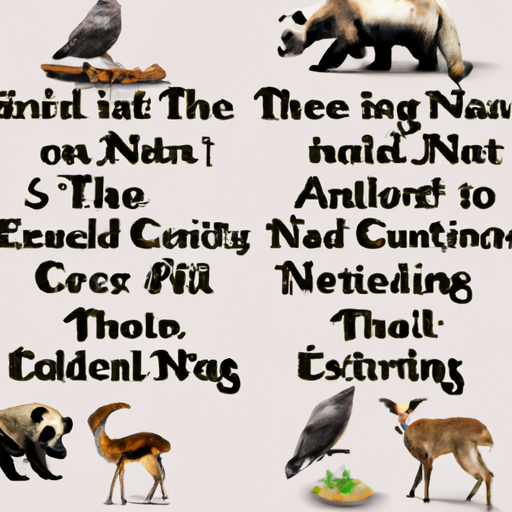 Introduction:
Introduction:
The concept of animal extinction is a topic that has garnered significant attention in recent years due to growing concerns about climate change, habitat destruction, and human activities. While the extinction of certain species has occurred throughout Earth’s history, the current rate of extinction is unparalleled. This article aims to explore the possibility of all animals going extinct, examining the various factors contributing to this scenario, possible consequences, and potential solutions.
1. Factors Contributing to Animal Extinction:
a) Habitat Loss and Fragmentation:
One of the primary reasons for animal extinction is the rapid loss and fragmentation of habitats caused by human activities such as deforestation, urbanization, and industrialization. As natural habitats shrink, animals are forced to navigate smaller areas, leading to decreased genetic diversity, increased competition, and reduced survival rates.
b) Climate Change:
The global rise in temperatures and alterations in weather patterns due to climate change pose significant threats to animal populations. These changes disrupt ecosystems, impacting food availability, reproductive cycles, and migration patterns. Consequently, many species struggle to adapt, leading to population decline and potential extinction.
c) Pollution and Contamination:
Pollution, including air, water, and soil pollution, has detrimental effects on animal health and habitats. Chemicals, plastics, heavy metals, and other pollutants accumulate in the environment, negatively impacting reproductive abilities, immune systems, and overall survival rates.
d) Overexploitation and Illegal Wildlife Trade:
Unregulated hunting and fishing practices, driven by commercial demand and poaching, have pushed numerous species to the brink of extinction. Illegal wildlife trade, fueled by the demand for exotic pets, traditional medicine, and luxury goods, further threatens many animal species across the globe.
e) Invasive Species:
Invasive species introduced by human activities can outcompete native fauna, disrupt food chains, and destroy habitats, leading to the decline or extinction of native species unable to adapt to new ecological dynamics.
2. Potential Consequences of Animal Extinction:
a) Ecological Imbalance:
Each animal species plays a vital role within its ecosystem. The loss of a single species can disrupt the delicate balance of interdependent relationships, potentially triggering cascading effects throughout the food chain. Ultimately, these disruptions can alter entire ecosystems, affecting plant life, other animal populations, and even human livelihoods.
b) Impact on Biodiversity and Genetic Diversity:
Animal extinction reduces overall biodiversity, resulting in the loss of unique genetic information and potential discoveries for pharmaceutical, agricultural, and scientific advancements. The loss of genetic diversity also weakens the resilience of ecosystems, making them more vulnerable to future threats and challenges.
c) Economic and Societal Disruptions:
The disappearance of animal species can have severe economic and societal implications. Many communities and industries rely on animals for tourism, cultural practices, and ecosystem services such as pollination, seed dispersal, and pest control. Extinction events may also lead to the loss of traditional knowledge and cultural heritage associated with specific animal species.
3. Potential Solutions and Conservation Efforts:
a) Habitat Conservation and Restoration:
Preserving and restoring natural habitats is crucial for protecting animal populations. This involves establishing protected areas, implementing sustainable land-use practices, and reforesting degraded areas. Conservation initiatives should also prioritize the creation of wildlife corridors to connect isolated habitats and facilitate species movement.
b) Climate Change Mitigation:
Addressing climate change is essential for safeguarding animal populations. Reducing greenhouse gas emissions, transitioning to renewable energy sources, and promoting sustainable practices can help mitigate the effects of climate change on ecosystems.
c) Regulation and Enforcement:
International cooperation is necessary to combat illegal wildlife trade and overexploitation. Stricter regulations, increased law enforcement efforts, and public awareness campaigns are vital to curbing these activities.
d) Education and Awareness:
Promoting environmental education and raising public awareness about the importance of biodiversity and conservation can foster a sense of responsibility towards protecting animal species. Engaging communities and empowering local stakeholders is crucial for sustainable conservation efforts.
Conclusion:
While the possibility of all animals going extinct is an extreme scenario, it is essential to recognize the urgent need for action to prevent further species loss. By addressing the factors contributing to animal extinction, implementing effective conservation strategies, and fostering a global commitment to biodiversity preservation, we can strive to ensure a sustainable future where animal species thrive alongside humans. It is our collective responsibility to protect and preserve Earth’s diverse ecosystems, for the benefit of present and future generations.
